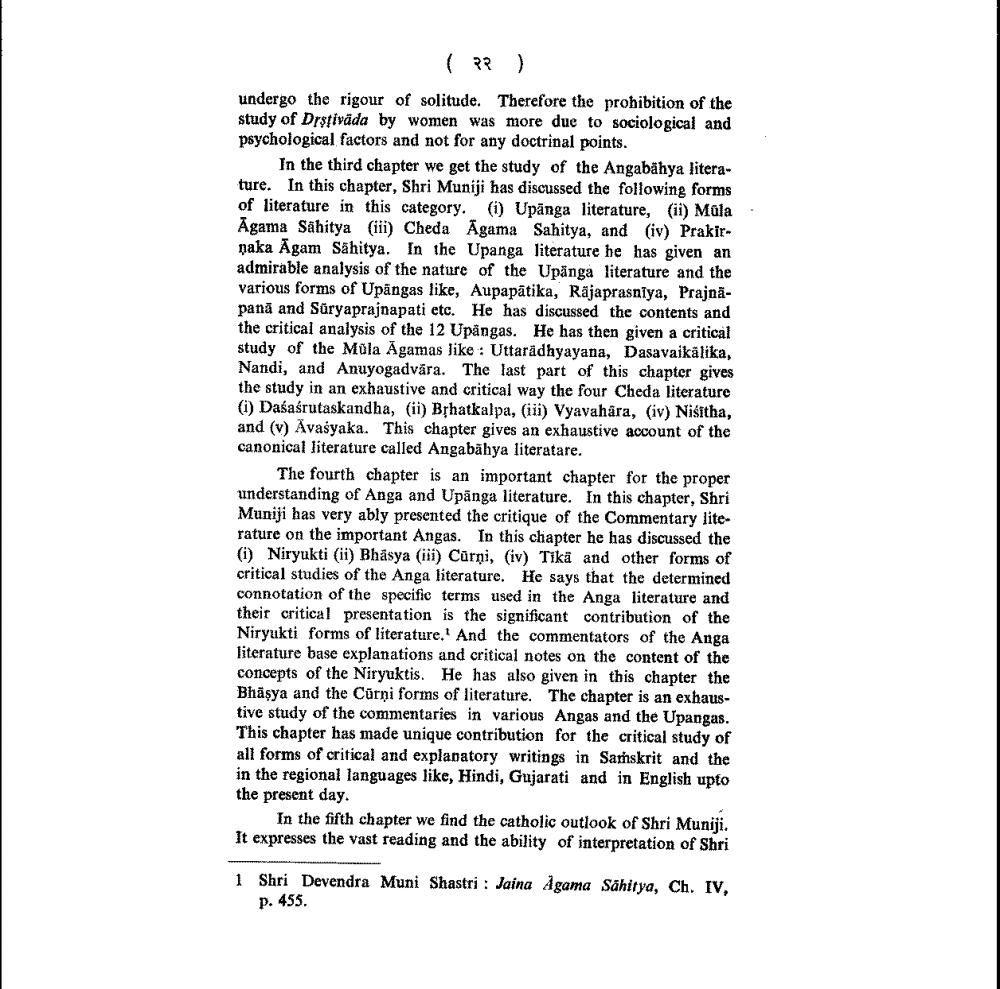________________
(PP
)
undergo the rigour of solitude. Therefore the prohibition of the study of Drstivāda by women was more due to sociological and psychological factors and not for any doctrinal points.
In the third chapter we get the study of the Angabähya literature. In this chapter, Shri Muniji has discussed the following forms of literature in this category. (i) Upanga literature, (ii) Mala Agama Sahitya (iii) Cheda Agama Sahitya, and (iv) Prakirpaka Āgam Sahitya. In the Upanga literature he has given an admirable analysis of the nature of the Upånga literature and the various forms of Upāngas like, Aupapātika, Rājaprasnīya, Prajnapanā and Suryaprajnapati etc. He has discussed the contents and the critical analysis of the 12 Upångas. He has then given a critical study of the Müla Agamas like: Uttaradhyayana, Dasavaikälika, Nandi, and Anuyogadvāra. The last part of this chapter gives the study in an exhaustive and critical way the four Cheda literature (i) Daśaśrutaskandha, (ii) Brhatkalpa, (iii) Vyavahara, (iv) Nisitha, and (v) Avašyaka. This chapter gives an exhaustive account of the canonical literature called Angabāhya literatare.
The fourth chapter is an important chapter for the proper understanding of Anga and Upānga literature. In this chapter, Shri Muniji has very ably presented the critique of the Commentary literature on the important Angas. In this chapter he has discussed the (i) Niryukti (ii) Bhasya (iii) Curņi, (iv) Tikä and other forms of critical studies of the Anga literature. He says that the determined connotation of the specific terms used in the Anga literature and their critical presentation is the significant contribution of the Niryukti forms of literature. And the commentators of the Anga literature base explanations and critical notes on the content of the concepts of the Niryuktis. He has also given in this chapter the Bhăşya and the Cūrņi forms of literature. The chapter is an exhaustive study of the commentaries in various Angas and the Upangas. This chapter has made unique contribution for the critical study of all forms of critical and explanatory writings in Saṁskrit and the in the regional languages like, Hindi, Gujarati and in English upto the present day.
In the fifth chapter we find the catholic outlook of Shri Muniji. It expresses the vast reading and the ability of interpretation of Shri
1 Shri Devendra Muni Shastri : Jaina Agama Sahitya, Ch. IV,
p. 455.




